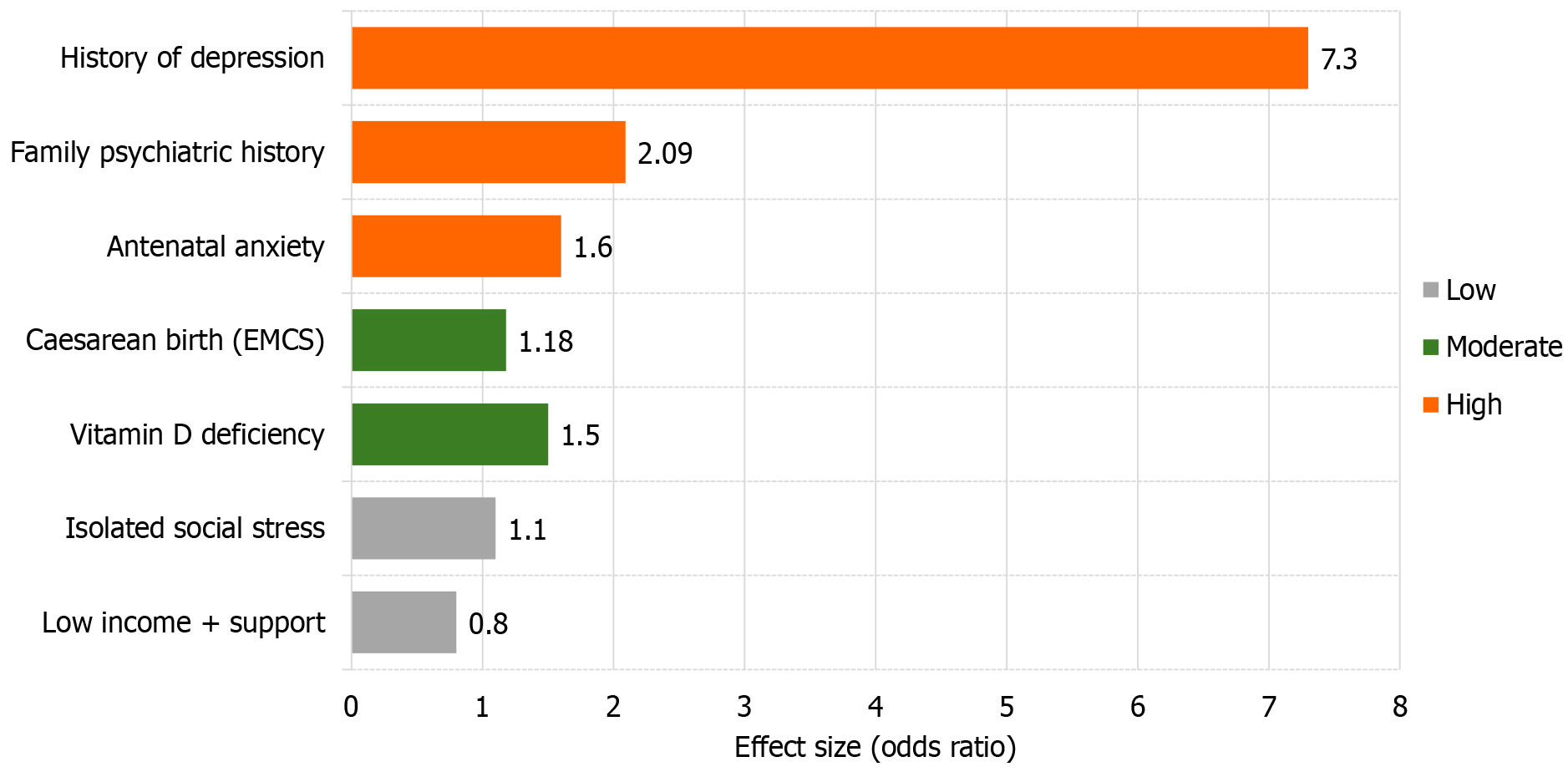Copyright
©The Author(s) 2025.
World J Clin Cases. Oct 16, 2025; 13(29): 110948
Published online Oct 16, 2025. doi: 10.12998/wjcc.v13.i29.110948
Published online Oct 16, 2025. doi: 10.12998/wjcc.v13.i29.110948
Figure 2 Graded risk factors for postpartum depression based on effect size and evidence strength.
This horizontal bar chart presents key psychosocial and biological risk factors for postpartum depression, categorized by level of supporting evidence (high: Red; moderate: Orange; low: Grey). The x-axis represents effect sizes, quantified as odds ratios (ORs), based on pooled estimates from meta-analyses and systematic reviews. A prior history of depression (OR = 7.3) emerged as the most potent risk factor, followed by family psychiatric history (OR = 2.09) and antenatal anxiety (OR = 1.6), all supported by high-certainty evidence. Moderate-certainty factors include emergency caesarean section (OR = 1.18) and vitamin D deficiency (OR = 1.5). Low-certainty factors, such as isolated social stress and low income with social support, demonstrated weaker and inconsistent associations (ORs < 1.2).
- Citation: Ji QQ, Wang MY. Epidemiology, pathophysiology, and interventions for postpartum depression: Systematic review. World J Clin Cases 2025; 13(29): 110948
- URL: https://www.wjgnet.com/2307-8960/full/v13/i29/110948.htm
- DOI: https://dx.doi.org/10.12998/wjcc.v13.i29.110948









